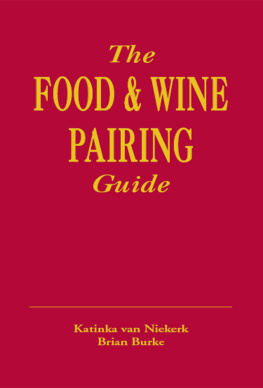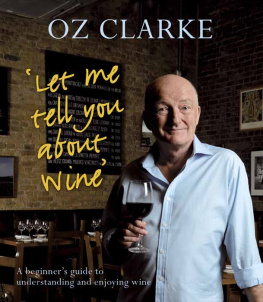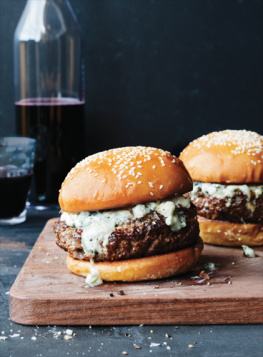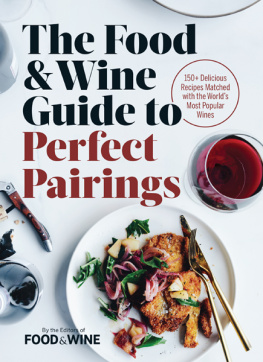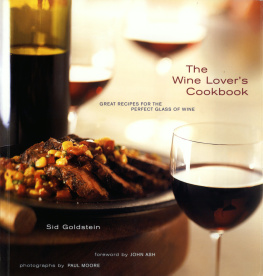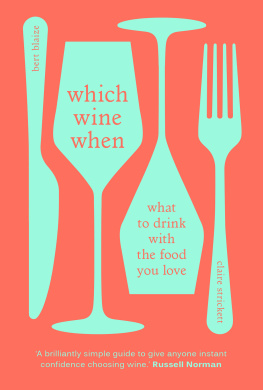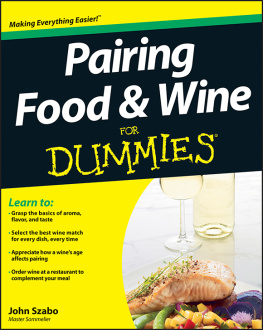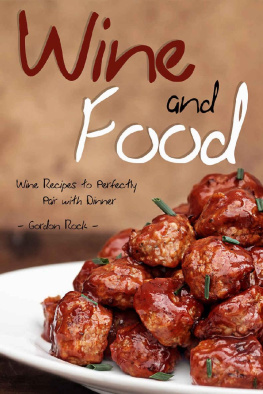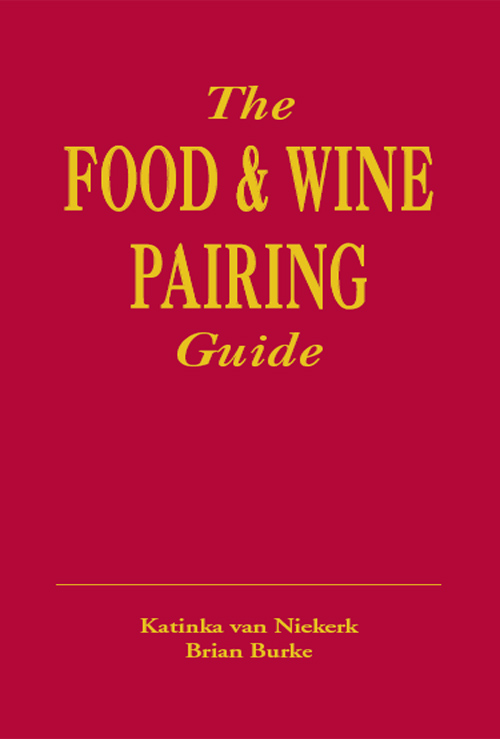Introduction: First, a bit of this and that
In recent years, we have started paying more attention to food and wine pairing. Thirty or forty years ago, this concept was a European phenomenon, in which the instinctive pairing of regional foods with regional wines was very successful. For example, a roast leg of lamb, studded with rosemary, a classic Bordelaise dish, is excellent when paired with a Bordeaux blend. Similarly, pasta with a hearty tomato sauce, so common in Tuscany, pairs unequivocally with Sangiovese, the food-friendly Italian grape, and its Tuscan incarnation, Chianti. Many regional pairings, like these, have withstood the test of time and are still unbeatable today. Over time, the concept of pairing certain foods and wines spread to non-wine producing countries in Europe and the New World, and it wasnt long before people were discovering that kangaroo steak pairs well with Shiraz, a wine that Australia has virtually adopted as its own; that Malbec goes well with an Argentinian beef barbeque, or that our own Pinotage partners happily with a springbok potjie.
But regional foods are no longer exclusive to their original domain. Thanks to the ease of global travel and the prevalence of the Internet, the world has become a village. Even your local convenience store now stocks foods and ingredients from all corners of the globe that we hadnt heard of a decade or two ago. At the professional level, chefs no longer stick to the tried-and-tested, and their patrons are revelling in new flavour combinations, thanks to mould-breaking experiments in food preparation.
In the same time frame, there has been a worldwide revolution in wine production and an increase in the availability of wine styles and cultivars. All this experimentation with food and wines naturally led to a curiosity about how the two would work together in the modern idiom. It was just a matter of where to begin.
Soon, restaurants began holding gourmet evenings, where the chef designs a menu to show off his creativity and skills and invites a winemaker to present wines to match and, hopefully, complement the food. This can prove tricky, however, as a winery may only have four or five wines in its range and a dish on the special menu might require a wine that falls outside that range of wines.
Lifestyle and cooking magazines soon followed suit, with a food editor, chef or wine fundi suggesting one or more wines to match various dishes. Similarly, many wine club members are no longer satisfied with winemakers leading them through a straightforward tasting, but frequently request food and wine pairings, or at least some tips, to get to grips with the perennial question: How do you go about selecting a wine to go with a particular dish?
The back labels of wines are also awash with pairing suggestions: Good with pasta or Goes well with cheese are typical examples, but which pasta dish would that be? One with a meaty Bolognese rag, or a creamy sauce, such as a fettuccine allAlfredo? Or maybe they meant a bowl of pasta dribbled with nothing more than olive oil and basil pesto? This is very puzzling to those among us who find it difficult to read minds, as no wine could possibly cope with three such divergent pastas. And which cheeses were they referring to on that back label? No single bottle can please a salty Gorgonzola, an acidic goats-milk cheese and a creamy Brie all at the same time.
Despite some excellent writing on the subject of matching food and wine, most of us remain unsure of how to go about selecting a wine to accompany a specific dish, or vice versa. Although we may come across often-helpful pairing suggestions, understanding how they were arrived at appears to be the prerogative of a privileged few. Why certain choices are made and why there is synergy between a specific dish and its accompanying wine remains hidden in shadow.

